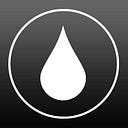Choosing the Best Testing Technology for the System
Back a few years ago I was in a discussion with another water treatment professional. We started talking about the testing equipment we use. We disagreed on what was best to use daily, and we both were stubborn on our choices. Then we realized we treated very different systems: he treated mainly college cooling systems and I treated power plants. So how could this make a difference in what we used?
My friend, David, had contracts with colleges who had quite a few cooling towers and closed loops on the campuses. The volumes of these systems were relatively small, but the quantity was high. To be successful, he needed to efficiently make sure his chemistries were correct during his service visits. The cost of water treatment associated with the systems was more in his labor than in the chemicals. He did not need so much precision in his treatment — he needed to be “hand-grenade” close to get the results he needed. He actually could afford to feed a little more chemical than needed so that he could assure getting the results the customer demanded while not killing his profitability. Drop tests and color matching tests well serve the purpose for this type of service. A testing accuracy of +/-10%, even +/-20%, was fine for these systems. His costs were more in his time than in the chemicals.
My accounts were power plants. My “small” cooling towers had more volumes of water than 30,000 gallons with a few over a million gallons. A typical plant only had one or two of these towers. The chemical costs were a major part of the overall contract and labor costs were a much smaller portion of the pie. To be successful the waters had to be carefully tested and chemical dosage rates closely controlled. The tighter the chemical control the better the chance for providing the customer the results they needed and my contract the profitability my company needed. So my tests relied on the precision of colorimeters and spectrophotometers supplemented by titrations using burets, not drop bottles.
So how do you decide which technology is the best for you? Here are a few questions to answer to help you decide: Is the account large in sales and/or strategic to my territory? Are the systems having problems with treatment results? Am I getting competitive pressure at this account? Did the bid spec (or customer requirements) demand precise testing or testing of analytes which require the use of a colorimeter or spectrophotometer to measure? If you answered “yes” to any of these questions, then you probably need to look at higher technology for your testing tools.
There is the old adage of “Good, fast and cheap — you can only choose two of the three.” In service we are often looking for a balance between speed and accuracy. Answering the above questions should steer you in the right direction.
